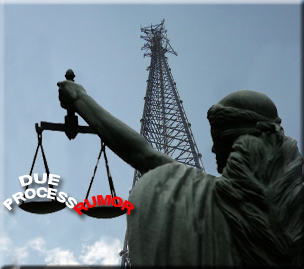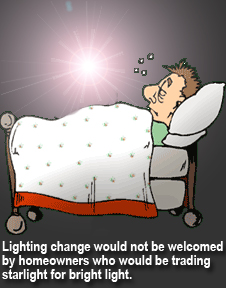|
Absence of serious scientific avian studies is questioned by site acquisition veteran
By Leilani T. Phillips
December 20, 2006 - According to the Federal Communications Commission's NPRM WT Docket No. 03-187 , the Department of Interior, US Fish and Wildlife Service estimates that between 4 and 50 million migratory birds COULD be dying each year as a result of collisions with communications towers. That's a delta of 46 million. There is no scientific evidence presented. 
As a matter of fact, in regards to the FCC's tower lighting and other rules that they might be considering, the FCC willingly admits the near impossibility in counting and identifying just endangered migratory birds whose deaths were caused by a collision with a communications tower. There seems to be no concern for those birds which die from flying into windows, buildings, bridges, cars and trucks. Most likely because there is no one single Federal Agency which can be extorted or coerced into regulating those other dangers.
You were here so you're culpable
The theory presented was the increase in bird deaths coinciding with the increase of the number of communication towers. This philosophy, also known as post hoc ergo procto hoc (Latin for you happened around the same time, you must be the cause) while a good starting point for a thesis is hardly conclusive evidence. What other things, events, natural occurrences increased in the same time period? Could global warming have anything to do with it?
The cost to the tower owners and the telecommunications industry is tangible, countable, and even predictable. It's a hefty sentence on a guilty verdict without due process. Before the American Bird Conservancy, et. al. points the finger at the telecommunications industry and the FCC imposes punishment, shouldn't it first be established, what if anything is killing the birds?
To speak against these regulations is taking the risk of being characterized unfeeling, inhumane and insensitive to all things nature. I am going to take that risk. Not only do I believe that there is no mass killing of migratory birds by communications towers, I do not believe that lighting them with medium intensity light would be the answer to the problem. I'm not an ornithologist. When migratory birds fly at night, are they using eye sight as their navigation? It's been discovered that they use a sort of calling system to locate each other which is different from the sounds they make during the day. They could be using this system to keep from crashing into each other and things, in which case the lack of lighting isn't the problem at all. [Jim Metzner, American Museum of Natural History, Pulse of the Planet Program #1464 October 1997]
I have been working in the wireless industry for almost a decade now. I've been all over the country negotiating leases for towers, telecommunications sites and collocations and have argued countless times in front of many zoning boards in jurisdictions large and small. Towers are very difficult to gain approval for in almost any town in the U.S. Small towns and cities have adopted lengthy and expensive approval processes or compliance regulations that are unattainable in order to keep them out as much as possible.
They are viewed as an eyesore, nuisance and sometimes a health hazard. Adding more regulations or restrictions is going to make this problem even worse. It already takes 18 months to 3 years to get zoning approvals on towers in some parts of this country. A NEPA report must be submitted proving that there will be no adverse effects to the surrounding environment. A SHPO is required to insure that the tower will not interfere with the historical surroundings.
There are fall zones, neighborhood notifications and meetings plus FAA application and approval. Even the small towns often require MPE and RF Intermod studies to prove that the Radio Frequency emitted from the antennas will not cause harm to any person, thing or television reception. Stealthing measures are required by many communities and large cities. I've even had a township request the tower be made to look like a dead tree. Yes, that's right so that it would blend in even in the winter. The problem with that being that a dead tree does not have leaves to hide the antennas.
Lighting every tower will mean that some of the tower lighting will beam directly into Mr. & Mrs. Small Town's bedroom window all night, every night. Blinking and blazing like a blinking light house beacon. Where will they turn? Who will help them resolve this issue? No one. They can't pick up their house and turn it away from the annoyance. So for the possibility that a tower might some day be the cause of a death to even a single migratory bird Mr. & Mrs. Small Town will have to sell their home which has been in their family for several generations or paint their windows black. (Which I'm not even sure will work.)
I do not disagree that the FCC has some responsibility to regulate the towers; however, too much regulation will kill what has become a very necessary and important part of emergency services, police, fire and rescue. The worry here is not whether or not two teenagers can find each other in the mall. It's if you or your spouse or child should need an ambulance - how many precious minutes are saved by the cell phone? Have we forgotten already the calls that were made from flight 93 before it crashed in Shanksville? Would that have been possible without towers?
That's what is really at risk. The FCC should not move forward with imposing any additional restrictions until such time as more scientific evidence is presented and research has been conducted on avian fatalities. Every Federal Government agency has the responsibility to perform its duties in accordance with due process and not on the basis of rumor. To impose additional financial burdens on the entire telecommunications industry at this time is Napoleonic.
 Leilani T. Phillips is the Outsource Services Manager for Wireless Facilities Inc. of Reston, VA. She has traveled extensively throughout the country representing carriers in their site acquisition and build-out programs. Leilani T. Phillips is the Outsource Services Manager for Wireless Facilities Inc. of Reston, VA. She has traveled extensively throughout the country representing carriers in their site acquisition and build-out programs.
Her comments will be submitted by WirelessEstimator.com to the FCC regarding the avian lighting issue and other considerations prior to the January 22, 2007 deadline.
If you have any remarks you would like to express, please submit them in our forum where other viewers have commented upon the FCC's Notice of Public Rulemaking regarding the avian fatality issue .
|